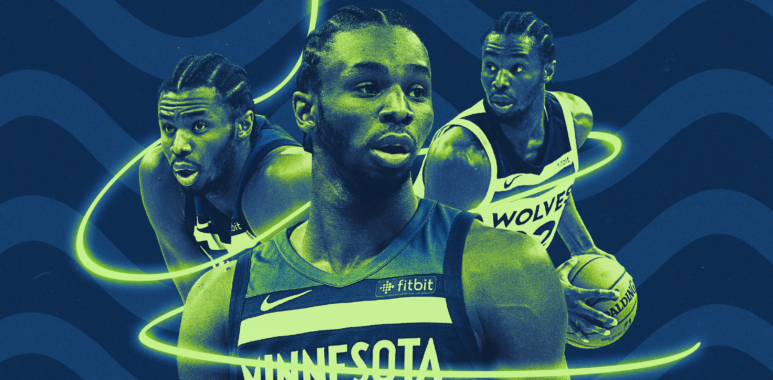
Is It Time to Give Up on Andrew Wiggins?
Turning potential into productivity is the leitmotiv of Andrew Wiggins’s career. The first thing he said after his final performance of the season is crucial, and also looks a like a message to the T-Wolves fanbase:
“I didn’t have the best year. Learned a lot, but I don’t think I had the best season. Just got to take it into the summer and use it as a motivation”
This was his last post-game press conference, some minutes earlier the T-Wolves season ended in a game 5 loss (122-104 defeat) to Houston.
Debating his progression and how much he has failed to live up to his five-year, $146.5 million max extension – which will kick in this year – are two of the most trending topics about Wiggins for the T-Wolves fanbase during this offseason.
You can’t prove they’re wrong, looking at his underwhelming preseason. The body language in these 5 games was disengaged and lethargic.
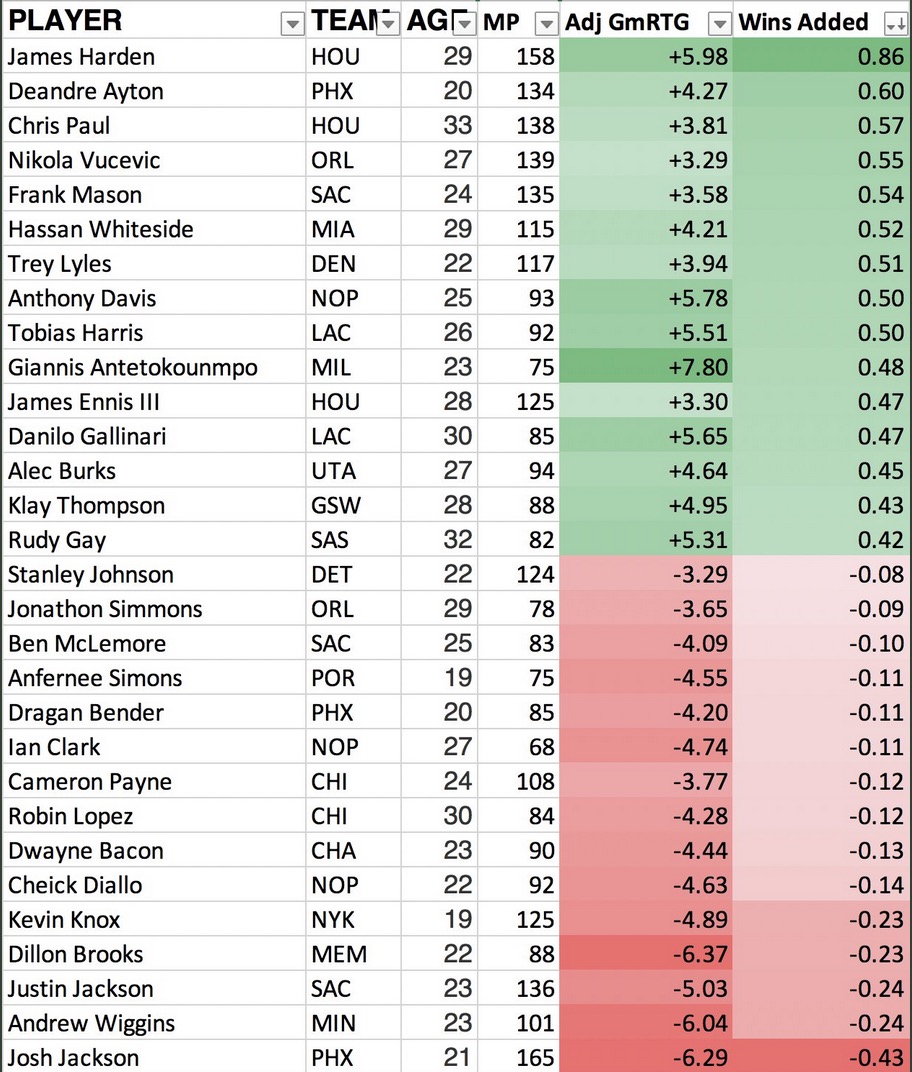
The toxic environment produced by the Butler trade saga shouldn’t be used as an excuse to come off soft, especially for a player who’s looking for a breakout year. How can he still translate that potential – based on his athletic tools – into actual productivity?
RETOOLING HIS GAME
Once Jimmy entered his first 30 games with Wolves with such a good impact – reflected by his luck adjusted on/off court difference in the span of these first two months, per Goldstein’s Adjustable PIPM – Wiggins has become a clear third option on offense.
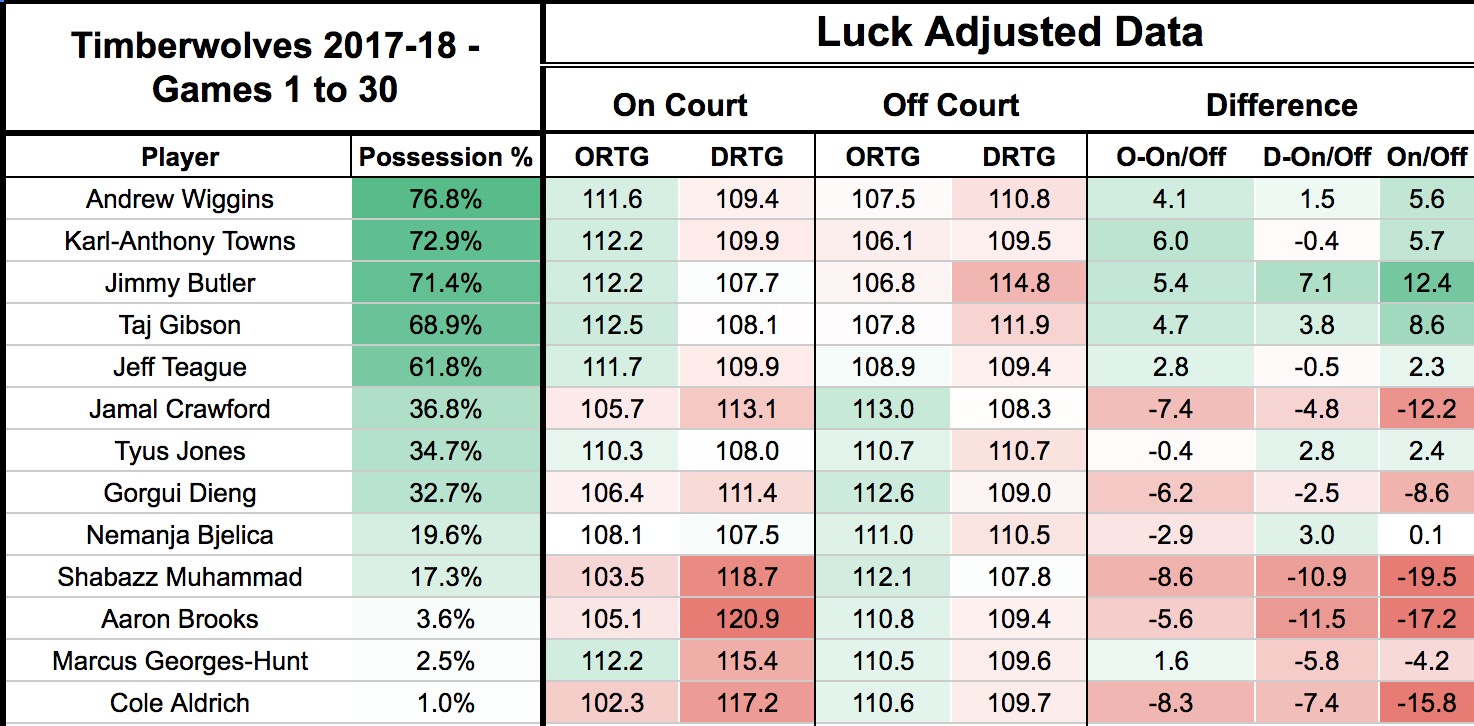
He took fewer shots, going from 19.1 to 15.9 field goal attempts per game in one season, and also saw his free throw rate drop from 39 percent over the first three years of his career to 24 percent with just 3.8 attempts per game. What even worse, he shot only 64.3 percent from the FT line (the lowest mark of his career)
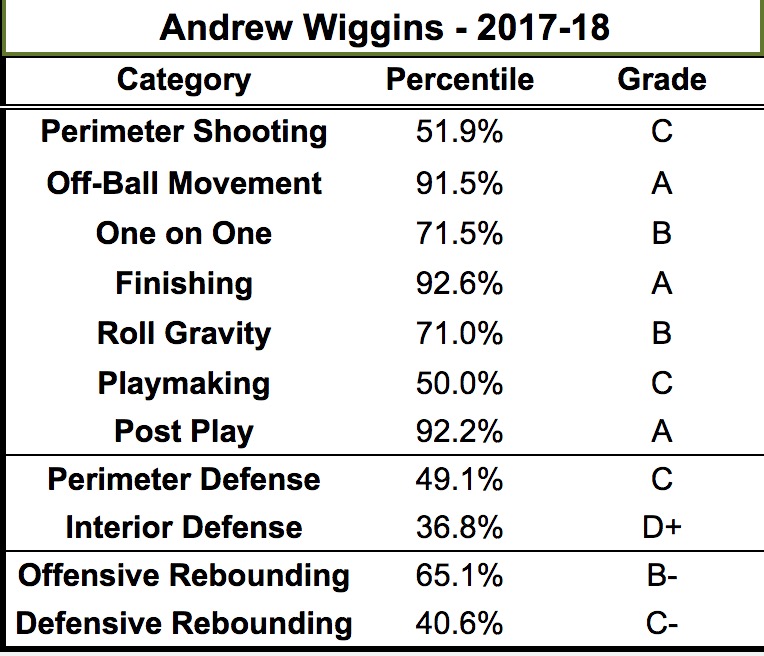
Even if he improved a lot in reading good opportunities from backscreens and cross screens along the baseline – he’s in the 92nd percentile in off-ball movement category, per BBall Index grades – he wasn’t an efficient player when he had to take quick decisions controlling the ball.
He spent 24 percent of his possessions as a ball handler in the pick and rolls and he produced only 0.8 points per possession (in the 50th percentile).
Retooling his game from a volume shooter (he was the third forward for field goal attempts in 2016-17) to a mini facilitator and an elite third option is a hard task.
If we’re searching for what has stunted his offensive growth, low motor could be the easy call. When he floats at times around the corners rather than looking for other options, is not a good sign.
But where he didn’t step up is on his rhythm.
CHANGE OF SPEED
Wiggins is one of the most explosive wings on the planet. If he still didn’t participate in a dunk contest, it’s just because of a high school competition where he unfairly (from his perspective) finished 2nd. So he promised himself to never attend again to events he can’t control at all.
One thing Wiggins can control instead and should have been working on this summer is changing speed. He is able to score from all three levels, but he is very often on the same pace from wherever spot he’s shooting.
When he drives to the basket in transition, he has one speed for changing directions, finds open lanes. Plus, he uses euro step too much, also when he could finishing harder.
Last year he scored just 0.67 PPP on ISO plays and even though he is far more efficient as a cutter, he had some problems on curl cuts/inside cuts.
He seems to go up & down with no different level of quickness, no swift movements to free up himself
Shifting gears from slow to fast, medium to full speed and any other combinations could help him a lot also when he pops out for a jumper, and his man goes under the screen.
From the 3 point line, he struggles in creating separation.
HOW TO CREATE SPACE
Among young wings that are not the first option of their respective teams, Wiggins has more issues in relocating and creating space on his own.
Tatum and Kuzma have fake pump-side step/step back to reset and get in rhythm. Adding a similar couple of moves to his repertoire could help Wiggins not to be predictable and to include some counters when he gets the ball on the perimeter.
Coming off the screens is something that Lavine did on another level of competency. From some of these elbow/ SLOB-elbow plays, Wiggins and Butler didn’t capitalize as well as him last year.
The dribble handoff scoring sequence is always the same: Zach sets a down screen, then Rubio cuts strong inside, and LaVine pops back for the handoff. The interesting part is that he misdirects defense in different ways: using a little hesi, faking the pass, changing the channel of his driving lanes.
These moves could help him to get rid of useless dribbles and turnaround/fadeaway movements. He also has reading skills still locked. In his first 3 years, he always had the green light in drive and kick situations.
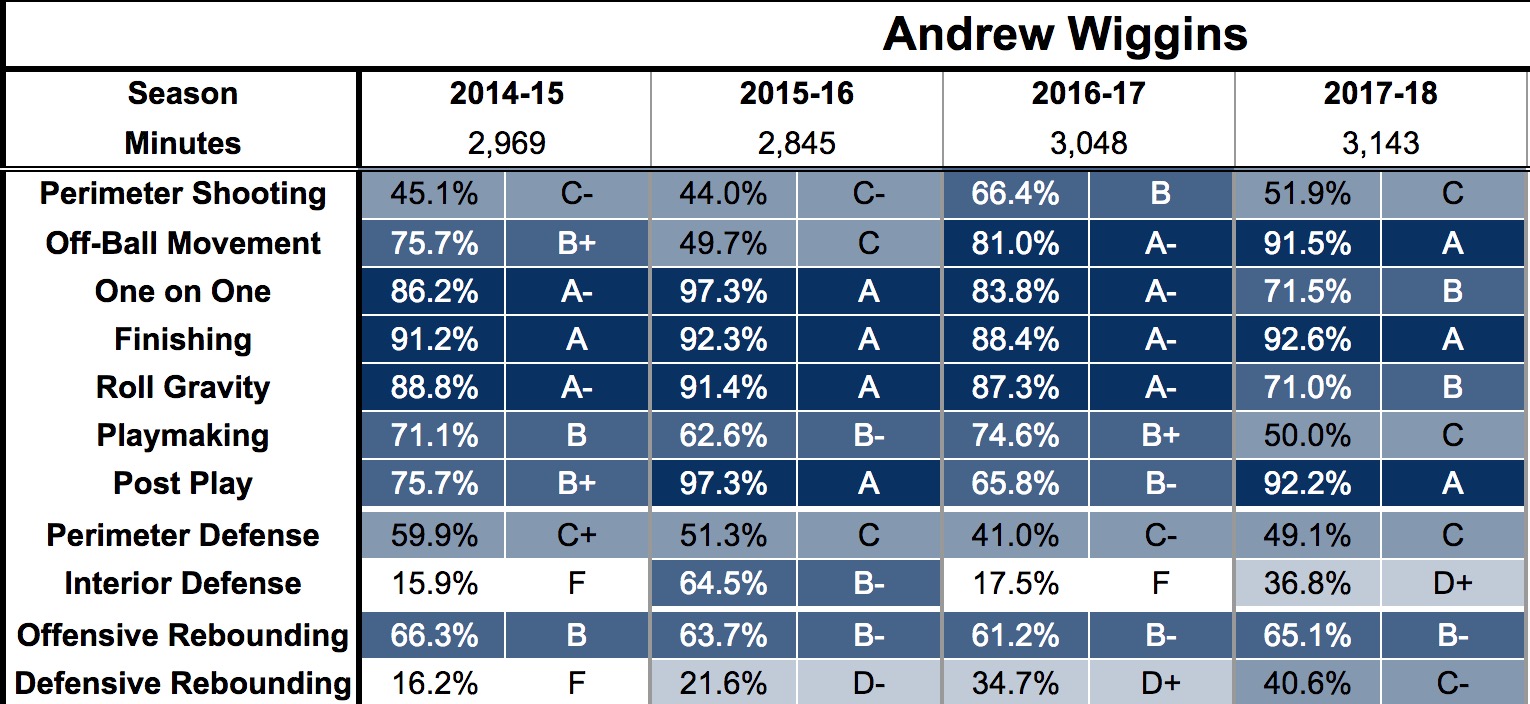
Can Wiggins add to his game this package in a relatively short span of time? What is clear is that he has no other season that this to incorporate it and finally blossom into a productive player.
